Tamarind Tree: [Cultivation, Irrigation, Associations, Pests and Diseases]
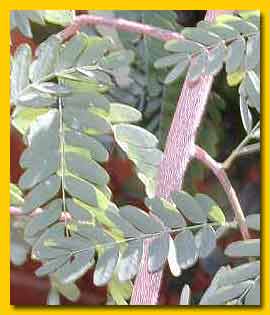
Important points when planting Tamarind tree
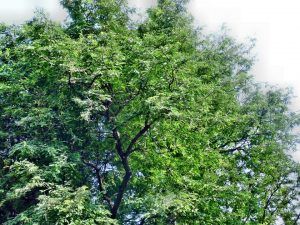 Where to sow? Full light. It needs a lot of sunlight.
Where to sow? Full light. It needs a lot of sunlight.- When? In spring, summer.
- How do we prepare the land? Removed, removing weeds. With a substrate rich in organic matter, deep and with a pH between 6 and 7.5.
- How do we water? With drip.
- How often do we water? In summer regular watering. Rest of the year reduce watering, just to keep the substrate moist.
- Plagues and diseases? Cinderella.
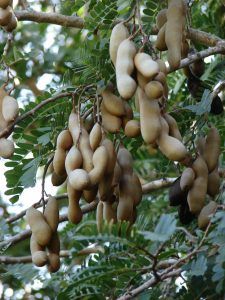 Tamarind, Tamarindus indica, is a tropical tree native to Africa that belongs to the Fabaceae botanical family, like chickpeas, peas and lentils.
Tamarind, Tamarindus indica, is a tropical tree native to Africa that belongs to the Fabaceae botanical family, like chickpeas, peas and lentils.
The plant produces brown, bulging pods in which the seeds contain a pulp with a sweet and acid taste at the same time.
The tamarind was introduced in Spain by the Arabs and later brought to America by the Spanish, where its cultivation proliferates.
Currently, India is the first producer and consumer of tamarind, forming part of many of its most traditional culinary recipes. Although it is slow growing, the tamarind tree can reach 20 meters in height.
Tamarind pulp has a wide variety of vitamins and minerals, such as: ascorbic acid, tartaric acid, iron, magnesium, thiamin, beta-carotene, phosphorus, potassium, vitamin C, calcium, etc.
It is also rich in carbohydrates, fats, proteins, fibers, and flavonoids. It serves to have strong bones and teeth, lowers cholesterol and helps fight constipation.
When to plant a tamarind tree?
Tamarind planting should be done in spring and summer, taking into consideration that it likes warm climates.
Where to do it?
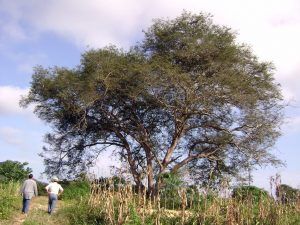 Tamarind requires a very good sun exposure. It is a crop that prefers tropical and subtropical climates.
Tamarind requires a very good sun exposure. It is a crop that prefers tropical and subtropical climates.
It does not tolerate frost when it is in the first phases of growth, although adult trees can withstand winters well. They are also very wind resistant.
Young and not very woody plants are usually quite susceptible to cold, so if a cold winter is expected, they will have to be protected. Tamarind achieves its best development and growth in warm climates, with dry and mild winters.
How to prepare the land?
Tamarind cultivation is not demanding in terms of soil and adapts well to most. However, when growing the tamarind plant, some details must be taken into account regarding the quality and structure of the soil.
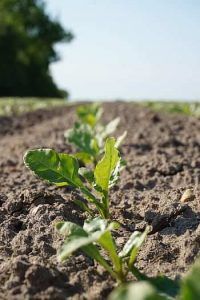 Tamarindus indica thrives in soils that are rich in organic matter, deep, with good drainage, loamy texture and pH around neutral, between 6.5 and 7.5.
Tamarindus indica thrives in soils that are rich in organic matter, deep, with good drainage, loamy texture and pH around neutral, between 6.5 and 7.5.
Green manures, cover plants and mulch favor the fertility of the land and have a very positive impact on the development of tamarind.
It can also be grown in mixed soils, with clay and sand content, they must have good drainage and a good amount of fertilizers.
Properly meeting the requirements and the necessary applications of agrochemicals in the cultivation of tamarind, it generates high profits for its producers.
For maximum development, the tamarind requires well-drained soils with good fertilization and must have irrigation water for dry periods.
How do we water a tamarind tree?
 Especially and during the first stages of the growth of the tamarind tree, it is important to keep the soil slightly moist, through regular watering.
Especially and during the first stages of the growth of the tamarind tree, it is important to keep the soil slightly moist, through regular watering.
It is best to water with the drip irrigation mechanism, thus avoiding waterlogging. It is necessary to water with a frequency that prevents the soil from drying out.
Above all, in summer, when temperatures rise, it is necessary to suspend irrigation. Tamarind has no problem growing in humid environments.
How do we plant a tamarind tree step by step?
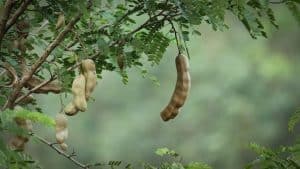 Tamarind production is cyclical, with abundant harvests every 2 or 3 years and the tree continues to produce even when it is 30 or 60 years old.
Tamarind production is cyclical, with abundant harvests every 2 or 3 years and the tree continues to produce even when it is 30 or 60 years old.
Tamarind planting can be done square or staggered, at a distance that can range between 7 and 10 m, depending on the topography of the land, management and whether the plant is grafted or from seed.
In general, Tamarind can be propagated by seed, by grafting or by air layering. For this it is important:
- Sow the seeds, cuttings or graft.
- Keep the seeds moist and in a week or so seedlings will be sprouting.
Applying a good technological level, with a good irrigation system, taking care of its health and nutrition, etc., productions of up to 500 kilos of tamarind per tree are obtained. In optimal conditions up to 30 tons per hectare.
The tree must be pruned to remove branches and dry leaves that prevent the proper development and growth of the plant, thus avoiding the spread of diseases and better productivity of its fruits.
What favorable associations does it have?
The association of crops of compatible plants produces benefits with respect to their cultivation separately, in addition to the use of light, water and/or nutrients.
Tamarind is a rustic tree that does not require great care to give good yields. Being a tall tree, it can serve to offer shade to other fruit trees and other crops in the garden that need semi-shade.
What pests and diseases attack the tamarind tree?
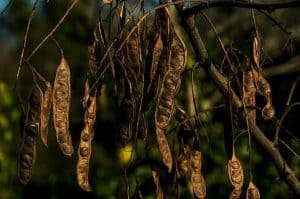 An important disease that can attack this plant is called powdery mildew, a fungus that also affects other varieties, such as cereals, fruit trees, grasses, ornamental plants, vegetables, etc.
An important disease that can attack this plant is called powdery mildew, a fungus that also affects other varieties, such as cereals, fruit trees, grasses, ornamental plants, vegetables, etc.
The most effective alternative to reduce this problem is chemical control with fungicides that are of the protective type, generally sulfur-based products.
How long does the tamarind live?
It is a very long-lived tree that can live more than 200 years without problems, guaranteeing continuous production.
How long does it take to grow the tamarind?
Its growth is very slow, growing between 50 and 80 cm per year.
For this reason it can take up to 30 years to fully grow.
How long does it take to produce fruit?
To start producing fruit, the tree needs at least 15 years, provided that it was planted by seed.
In the case of vegetative reproduction, it can begin to bear fruit after 3 or 4 years of cultivation.
Can it be grown in a pot?
Yes, it can be grown in a pot. However, it is a tree that needs a lot of space, so it will require repotting over time.
How many times does the tamarind produce fruit?
Its production is cyclical, which means that it needs to complete a complete cycle to be able to produce.
You can usually have bumper crops every 3 years.
Should tamarind be pollinated to obtain fruit?
It does not require pollination to bear fruit, because its flowers are hermaphroditic.
How cold can tamarind tolerate?
Does not tolerate cold. The minimum temperature to which it can be exposed is 4ºC, as long as the weather remains dry.
How many tamarinds can be planted per hectare?
In total, between 80 and 100 tamarind specimens per hectare can be planted, giving them adequate space to develop.
What kind of fertilizer does tamarind need?
It is convenient to add about 50 grams of nitrogen per year to boost its production, without exceeding 4kg per tree.
Phosphorus is also important but it should be added after the 8th year of life, without exceeding 2kg per plant.
How much heat and/or drought can tamarind tolerate?
It does not tolerate total drought, since it loses production quality, it is best to always keep the ground a little moist, without exaggerating.
As for the heat, it can withstand up to 35ºC without problems, with winds that can cool the environment a bit.
Bibliography and references
- My First Knowledge Encyclopedia. Snake plants and conservation. Published by Grolier Incorporated. New York, 1961. Pages 80-81.

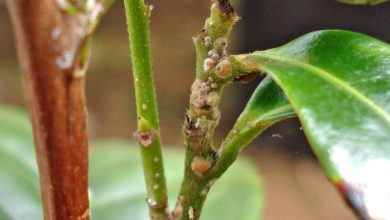
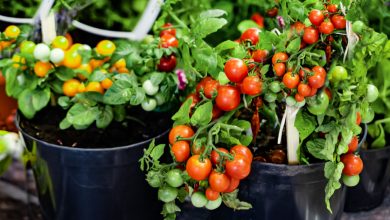
![Photo of Black poplar: [Cultivation, Irrigation, Care, Pests and Diseases]](https://www.complete-gardening.com/wp-content/uploads/2022/08/black-poplar-cultivation-irrigation-care-pests-and-diseases-350x220.jpg)
